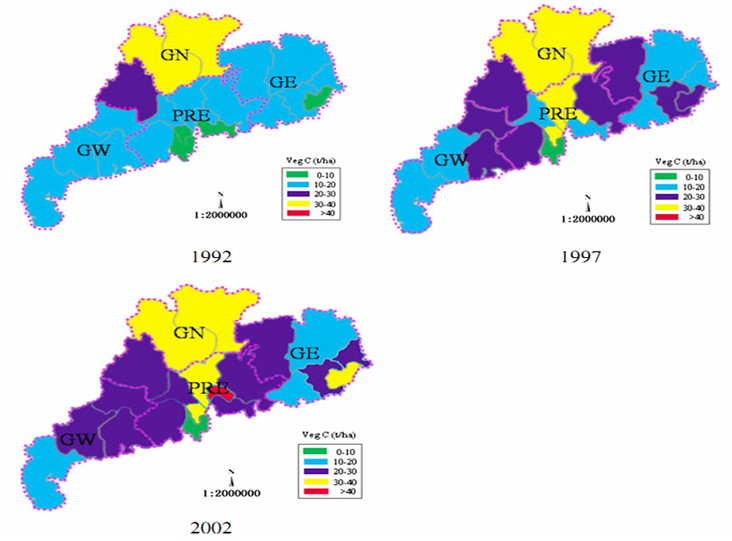

Dr. REN Hai at South China Botanical Garden and Dr. CHEN Hua at University of Illinois co-operated to examine the spatial and temporal patterns of C storage from 1992 to 2002 in forest ecosystems in Guangdong, China.
They used the data of three continuous forest inventory in 1992, 1997, and 2002, four TM images and one soil survey data in Guangdong to examine the spatial and temporal patterns. They found that the forest coverage percent in Guangdong increased from 37.1% in 1992 to 57.2% in 2002 while the total forest C storage in Guangdong increased from 144.73±6.20 Tg in 1992 to 215.03±8.48 Tg in 2002. The order of average forest biomass C storage increase during 1992-2002 among the four regions was Western Guangdong (GW) > Eastern Guangdong (GE) > the Pearl River Delta (PRE) > Northern Guangdong (GN). The spatial distribution of forest C storage in Guangdong was uneven and this pattern reflected differences in forest management and economic and social development (Please see the figure). The factors including tree species and altitude and slope aspect could explain 58-67% variation of Veg C storage multiple regression model in Guangdong. However, the multiple regression model for SOC storage could only explain about 18-39% variation of SOC storage in Guangdong. Total ecosystem C was mainly determined by SOC storage.
They suggested that future forest management should focus on the selection of tree species, management of forest stand structures and implementation of sustainable practices so that Veg C sequestration potentials could be maximized.This work has been published in Plant and Soil (Ren et al., 2012, online published)(http://www.springerlink.com/content/100326/).

The order of average forest biomass C storage increase during 1992-2002 among the four regions.

